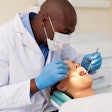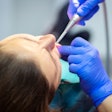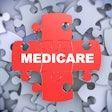Almost half a million Coloradans are expected to gain dental benefits under Medicaid by 2016, but they'll have a hard time finding a dentist to treat them, according to a study by the Colorado Health Institute.
Policy changes scheduled for next year will increase dental care for Medicaid recipients in the state, but many counties don't have dentists who accept Medicaid, according to the study authors.
Colorado lawmakers voted this year to expand Medicaid's dental benefits to adults. The change will go into effect about the same time as the state expands Medicaid coverage under the Patient Protection and Affordable Care Act to those who make slightly more than the federal poverty level.
The changes are expected to increase the ranks of Medicaid enrollees with dental benefits to 844,491 in 2016, from 348,142 last year, according to the study. Some rural areas simply don't have any dentists at all, such as sparsely populated Kiowa or Mineral counties. In more populous Delta and Elbert counties, there are dentists but none take Medicaid. In all, 17 counties in Colorado don't have a dentist who accepts Medicaid, the study authors noted.
For many adults, getting to the nearest dentist who accepts Medicaid requires driving 65 to 110 miles. At the same time, much of the working population will remain uninsured even as Medicaid expands, according to the study.
Carol Morrow, DDS, is the only dentist in Baca County, which has a population of 4,500. Dr. Morrow accepts Medicaid, and some patients drive hours to see her. She thinks everyone deserves the same kind of care, whether they can afford it or not, and the expansion of Medicaid benefits to adults will allow her to get some compensation for care she now provides for free.
Dr. Morrow is participating in a new push by the Colorado Dental Association to encourage more dentists to accept Medicaid as the policy changes unfold.
Expanding the role of dental hygienists may be one solution, according to the study authors, while boosting the capacity of dentists who already see low-income patients may be another route.



















